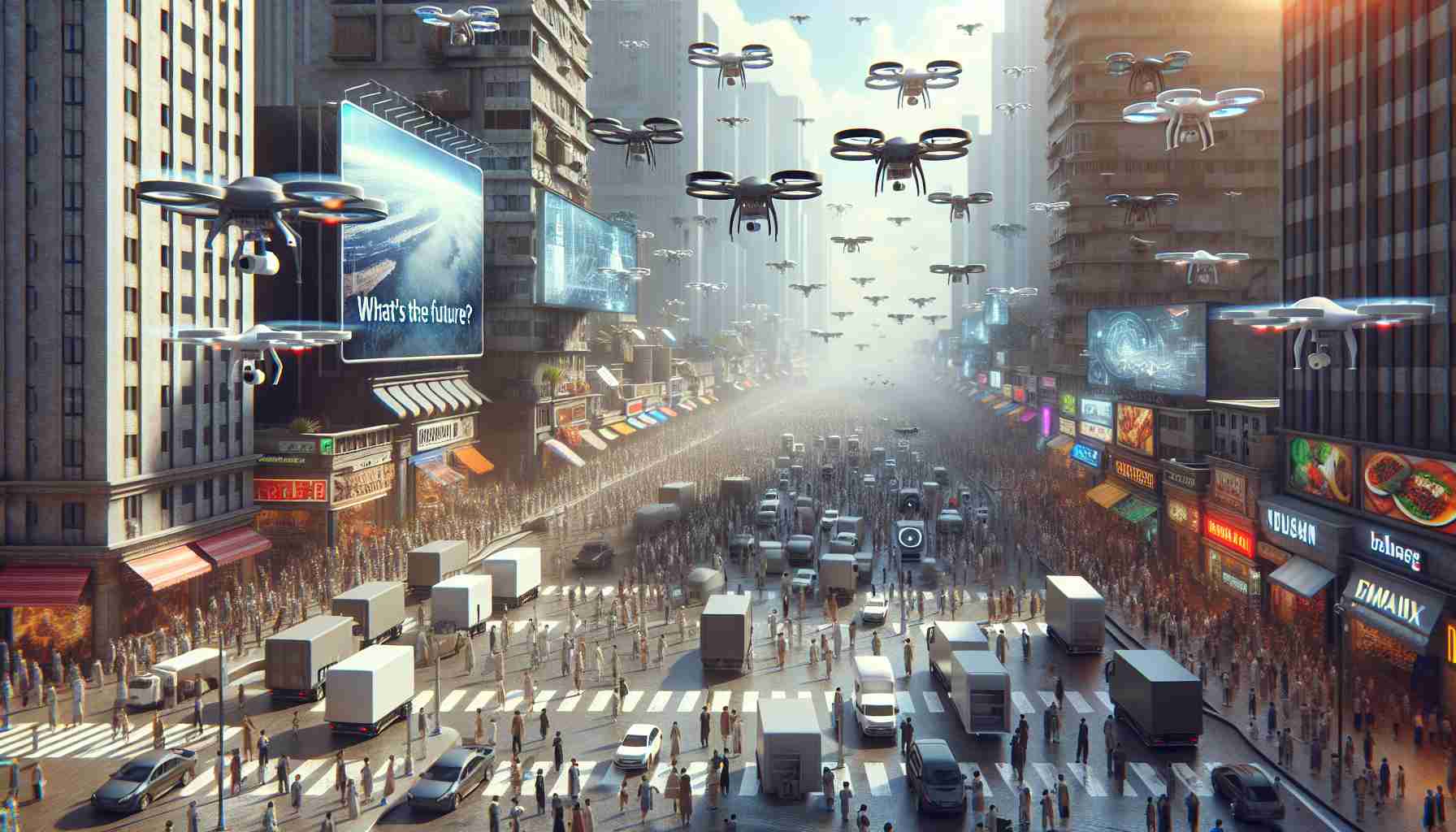- Drone technology is rapidly advancing, increasing sightings and discussions about its future implications.
- Improved accessibility and affordability have boosted recreational and commercial drone use across various industries.
- Drones are increasingly used in logistics and delivery, with companies like Amazon leading the charge.
- Privacy concerns are rising as drones may be used for intrusive surveillance.
- Collision risks present significant safety challenges that require attention.
- Governments are working on stronger regulations, including no-fly zones and registration systems.
- AI integration could further enhance drone capabilities through autonomous flight and navigation systems.
- A balance between innovation and regulation is essential to address the challenges of drone technology.
In recent months, drone sightings have become increasingly common, sparking a conversation about the future implications of this burgeoning technology. As drone technology evolves at breakneck speed, enthusiasts and experts alike are considering both the advantages and the potential issues it may bring.
The present-day surge in sightings is largely due to improved accessibility and affordability, leading to an increase in both recreational and commercial drone usage. From real estate to filmmaking, various industries are capitalizing on drones’ ability to capture stunning aerial footage and conduct surveillance with ease. The adoption of drones in logistics and delivery systems by companies like Amazon has also gained noticeable traction, suggesting that air-based parcel delivery could become a norm sooner than anticipated.
While their benefits are undeniable, concerns are mounting over drones’ proliferation. Privacy advocates warn of potential infringements, as drones could easily become tools for intrusive surveillance. Moreover, the risk of collisions—whether with other drones, aircraft, or buildings—poses significant safety challenges.
Governments globally are grappling with the need for more robust regulatory frameworks to accommodate this rapidly changing landscape. For instance, many are exploring no-fly zones and mandatory registration systems to ensure safer skies.
Looking ahead, experts predict that artificial intelligence integration could further revolutionize drone capabilities, allowing for autonomous flight and enhanced navigation systems. However, striking a balance between innovation and regulation will be crucial to navigating the challenges posed by this aerial evolution.
Are Drone Technologies Really Shaping Our Future? Explore What’s Next!
Pros and Cons of Drone Technology
Pros:
1. Efficiency in Logistics: Drones significantly reduce delivery times by bypassing traffic and other ground-based obstacles.
2. Cost-Effective Surveillance: They provide a cheaper alternative to traditional surveillance methods, beneficial for large-scale monitoring.
3. Disaster Management: Drones are invaluable in assessing damage during natural disasters, aiding in quick and safe emergency response.
Cons:
1. Privacy Concerns: The ease of access to personal spaces raises significant privacy issues.
2. Safety Risks: Inexperienced users may increase the chances of collisions and accidents.
3. Regulatory Challenges: Diverse regulations across regions complicate the integration of drone technology internationally.
Drone Market Forecast and Trends
The global drone market is projected to reach a valuation of $63.6 billion by 2025, driven by innovations in AI and machine learning which enhance drone capabilities in autonomous navigation and obstacle avoidance.
Key Trends:
– Increased Automation: Expect more drones equipped with AI for complex tasks autonomously.
– Eco-friendly Alternatives: Advancement in battery technology could lead to longer flight times and more sustainable energy solutions.
– Expanded Agricultural Applications: Precision agriculture using drones will grow, with drones being used for tasks such as crop monitoring and pest control.
Regulatory Innovations
Governments worldwide are continuously evolving their drone regulations to address safety and privacy. In the US, the Federal Aviation Administration (FAA) has introduced rules such as remote ID requirements for drones to improve transparency and security.
Security Aspects:
– Implementation of geofencing technology to restrict drone access to sensitive areas.
– Enhanced cybersecurity measures to prevent drone hijacking and misuse.
Most Important Related Questions Answered
1. What industries are benefiting the most from drone technology?
Industries such as real estate, filmmaking, agriculture, logistics, and emergency services are seeing significant impacts from drone technology. In real estate, drones offer unparalleled views of properties, while filmmakers leverage them for dynamic shots. In agriculture, drones help in precise crop monitoring, reducing wastage and increasing yield.
2. How is AI influencing the evolution of drones?
AI is a game-changer for drones, enhancing their ability to conduct complex missions autonomously. Drones equipped with AI can better navigate complex environments, avoid collisions, and complete tasks like mapping and deliveries without human intervention. This technology is crucial for advancing drone applications in various sectors, including logistics and surveillance.
3. What are the current regulatory challenges facing drone integration, and how are they being addressed?
One of the main challenges is the lack of unified regulations across different regions. This disparity complicates commercial drone operations and raises safety concerns. To address these, countries are developing frameworks for mandatory registration, proposing no-fly zones, and establishing operation certifications. Efforts by organizations like the FAA aim to set standards for safe drone use while accommodating technological advancements.
For more information and updates on drone technology, visit FAA and DJI.



















